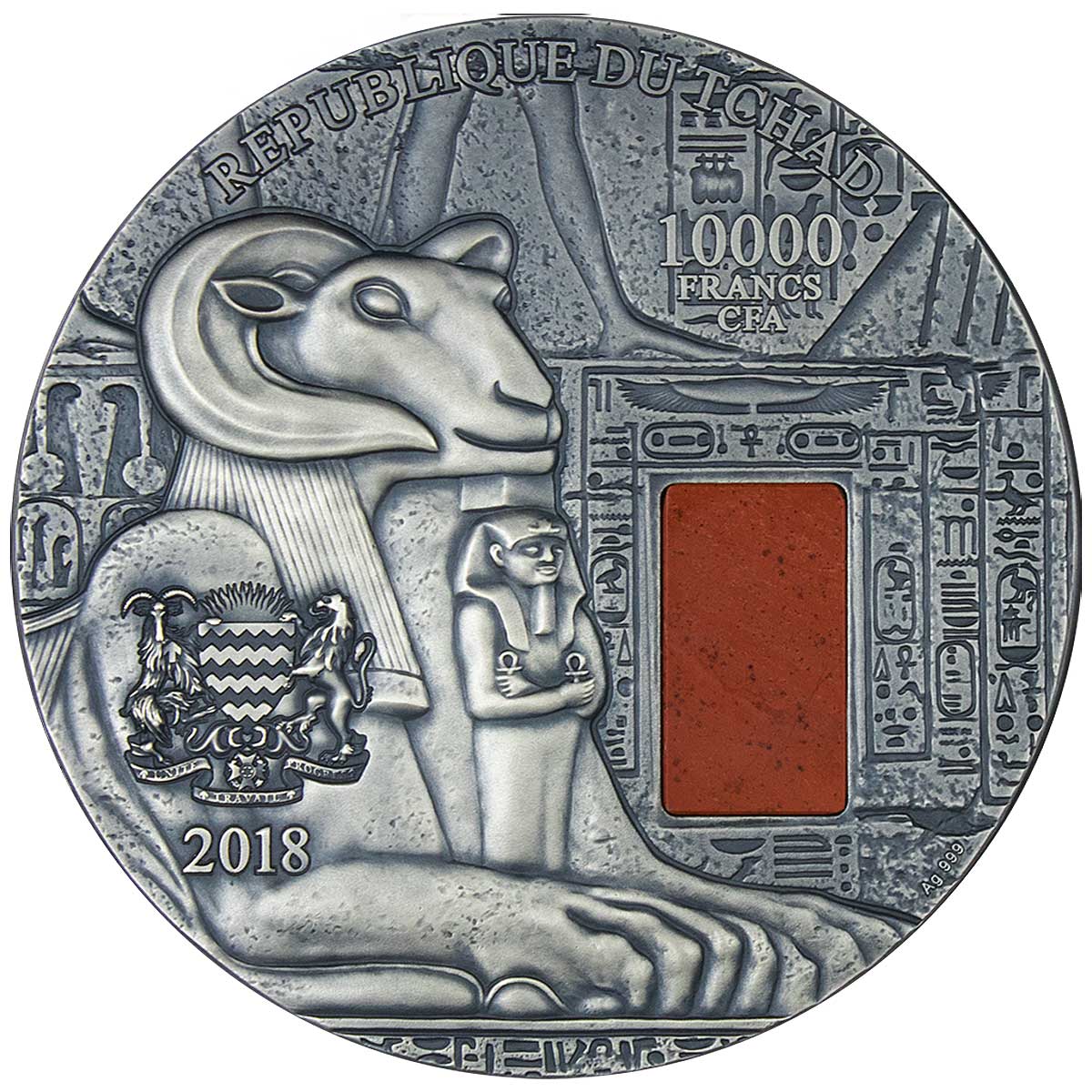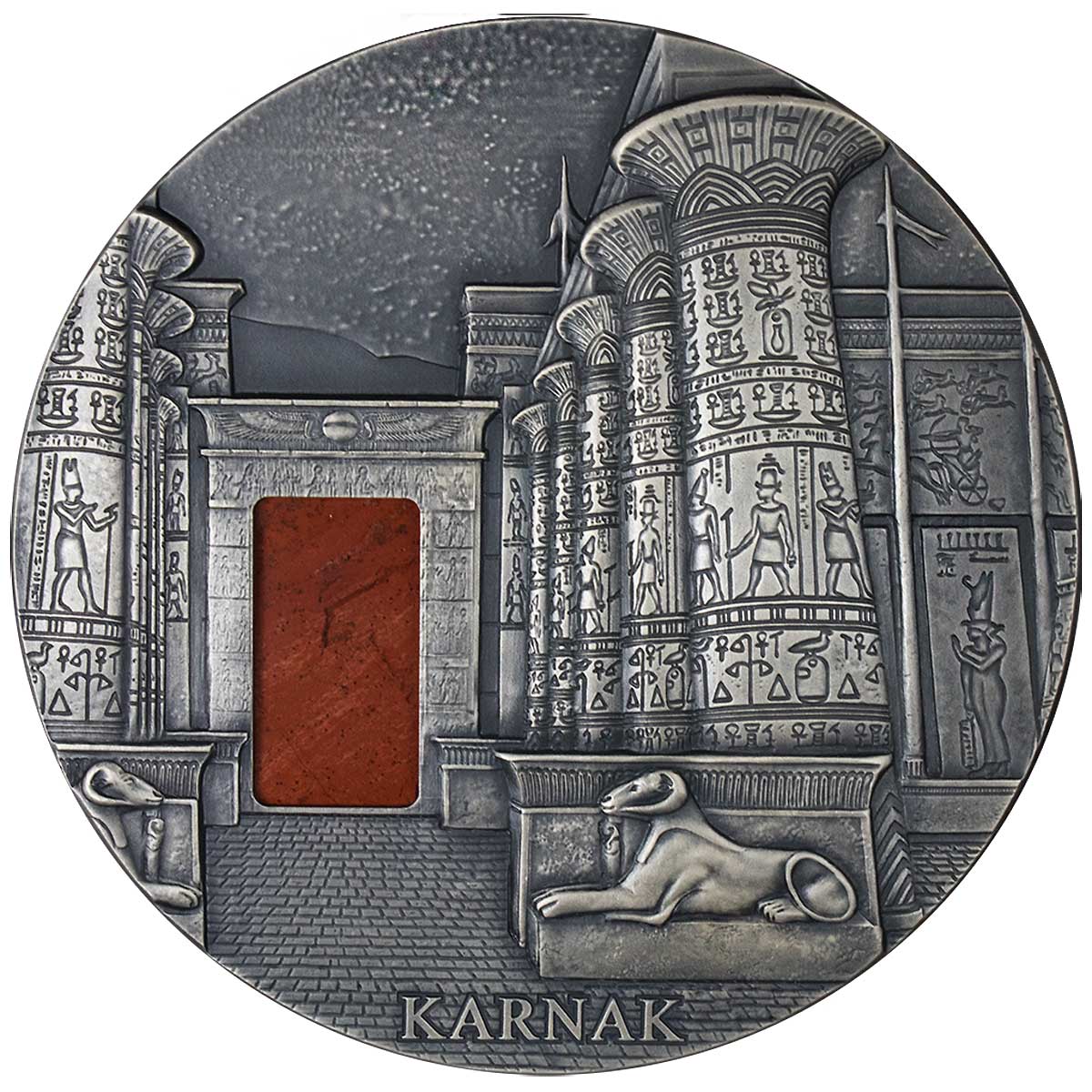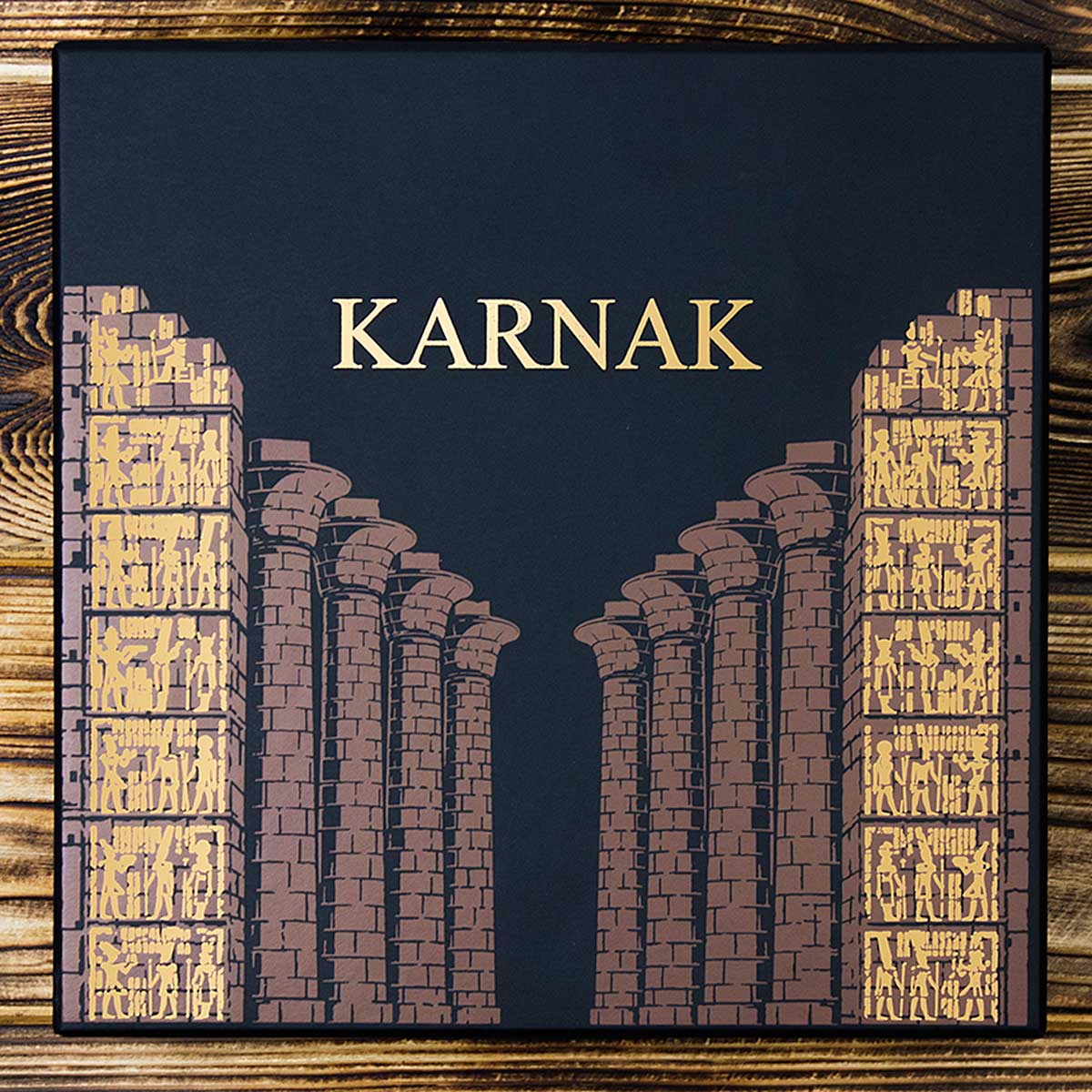Karnak is the fourth subject in Moneda Nueva’s heavyweight ancient architecture coin series
The iconic Indian temple the Taj Mahal, the enigmatic Cambodian ruins at Angkor Wat, and the Mexican city of Uxmal have all been chosen as subjects for Moneda Nueva’s flagship series of one-kilogram silver coins. Impressive pieces, with very exclusive mintages of just 100 pieces, they join CIT Coin Invest at the top of the architectural coin game as far as quality goes. The fourth coin is now ready to go and features the quite incredible ruins of the ancient Egyptian city of Karnak.
This huge temple complex has plenty of ruins still in existence, and Moneda Nueva has used some of the more iconic elements to adorn its latest opus. Starting with the reverse face, we have a view of one of the temples in its prime. Walls and columns covered in hieroglyphics draw the eye to a large pathway that heads up to a doorway filled with a piece of the mineral Jasper. It’s an atmospheric piece of work.
The obverse also features the same piece of jasper, as it’s set in a window through the coin. Again, the surrounding background is a mass of Ancient Egyptian writing, but the foreground is taken up with a huge statue of, most likely, Khnum, the ram-headed god. Khnum was extremely important in early Egypt, before being largely supplanted by Ra. The issue details are inscribed on this face, including the national coat of arms of the Republic of Chad, but all are sympathetically placed and not overly distracting.
A chunky, 100mm wide rimless beast with the ubiquitous antique finish, it’s presented in a good quality wooden box with a certificate of authenticity. Available to pre-order now, as you’d expect, this isn’t a bargain basement item and you’ll need to stump up around €3,300 for one, but with its high production values, hefty weight and ultra-limited mintage,you’d expect nothing less.
KARNAK IN HISTORY
The Temple of Amun is the largest religious building in the world (though some claim Angkor Wat in Cambodia is larger) and honors not only Amun but other gods such as Osiris, Montu, Isis, Ptah and the Egyptian rulers who wished to be remembered for their contributions to the site. It was built gradually over the centuries, with each new ruler adding to it, from the beginning of the Middle Kingdom (2040 – 1782 BCE) through the New Kingdom (1570 – 1069 BCE) and throughout the Ptolemaic Dynasty (323 – 30 BCE).
It has even been suggested that the rulers of the Old Kingdom (c. 2613 – c. 2181 BCE) first built there owing to the style of some of the ruins and the king’s list of Old Kingdom monarchs inscribed by Tuthmose III (1458 – 1425 BCE) of the New Kingdom in his Festival Hall there. His choice of kings suggests that he may have removed their monuments to build his hall but still wanted them to be remembered. Structures were regularly removed, renovated, or expanded during the temple’s long history. The complex continued to grow with each succeeding ruler and the ruins today cover over 200 acres of land. It has been estimated that one could fit three structures the size of Notre Dame Cathedral in the main temple alone.
The Temple of Amun was in constant use with perpetual growth for over 2,000 years and considered one of the most sacred sites in Egypt. The priests of Amun who oversaw the administration of the temple became increasingly wealthy and powerful to the point that they were able to take control of the government of Thebes toward the end of the New Kingdom when rule of the country became divided between theirs at Thebes in Upper Egypt and that of the pharaoh in the city of Per-Ramesses in Lower Egypt. The rise of the power of the priests, and the resulting weakness of the position of the pharaoh, is considered the major contributing factor in the decline of the New Kingdom and the beginning of the Third Intermediate Period (1069 – 525 BCE). The temple complex was damaged in the Assyrian invasion of 666 BCE and again by the Persian invasion of 525 BCE but, both times, was repaired and renovated. (Source: Ancient Encyclopedia)
| SPECIFICATION | |
| DENOMINATION | 10,000 Francs CFA ( Republic of Chad) |
| COMPOSITION | 0.999 silver |
| WEIGHT | 1,000 grams |
| DIMENSIONS | 100.0 mm |
| FINISH | Antique |
| MODIFICATIONS | High-relief, Jasper window |
| MINTAGE | 100 |
| BOX / COA | Yes / Yes |







Leave A Comment